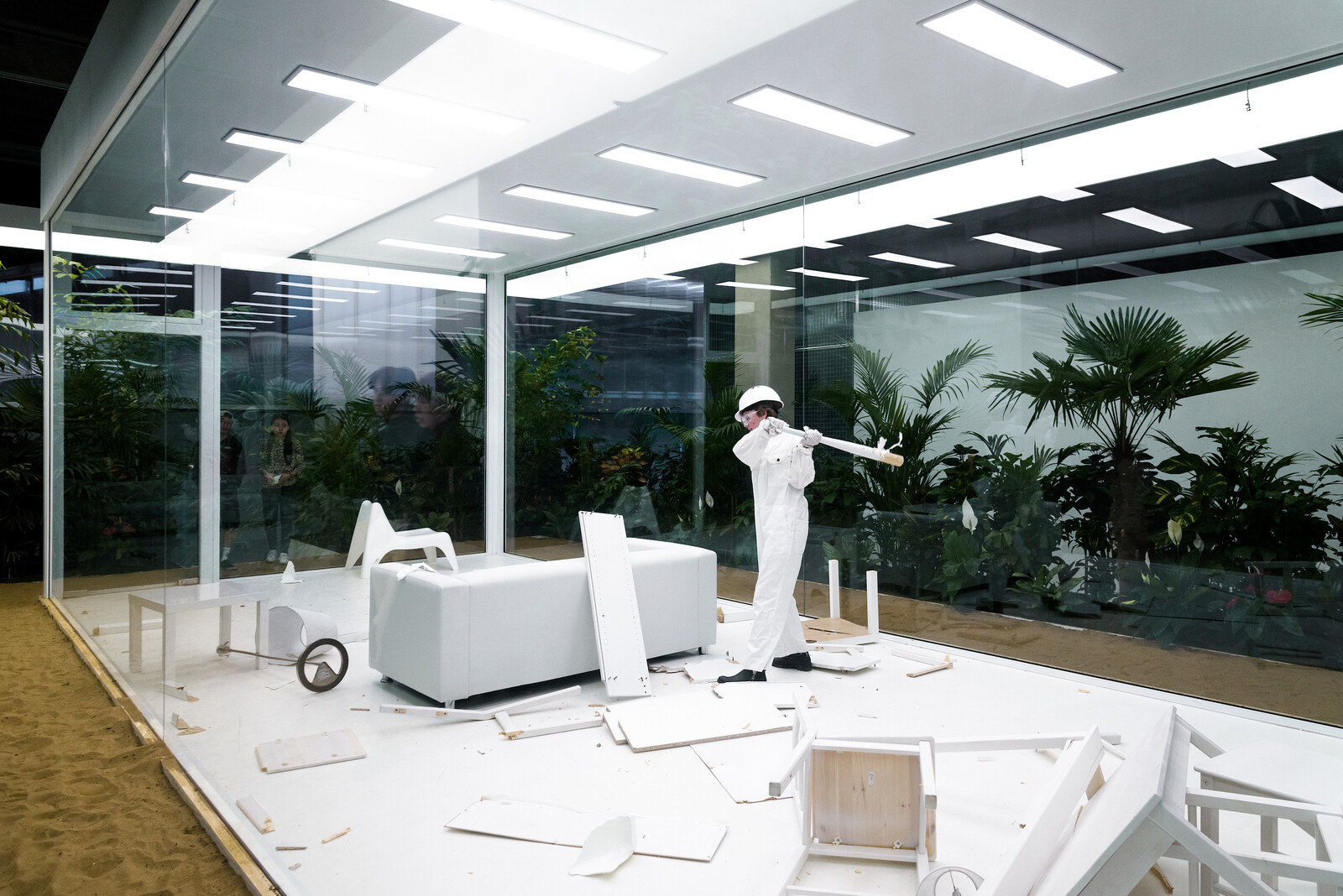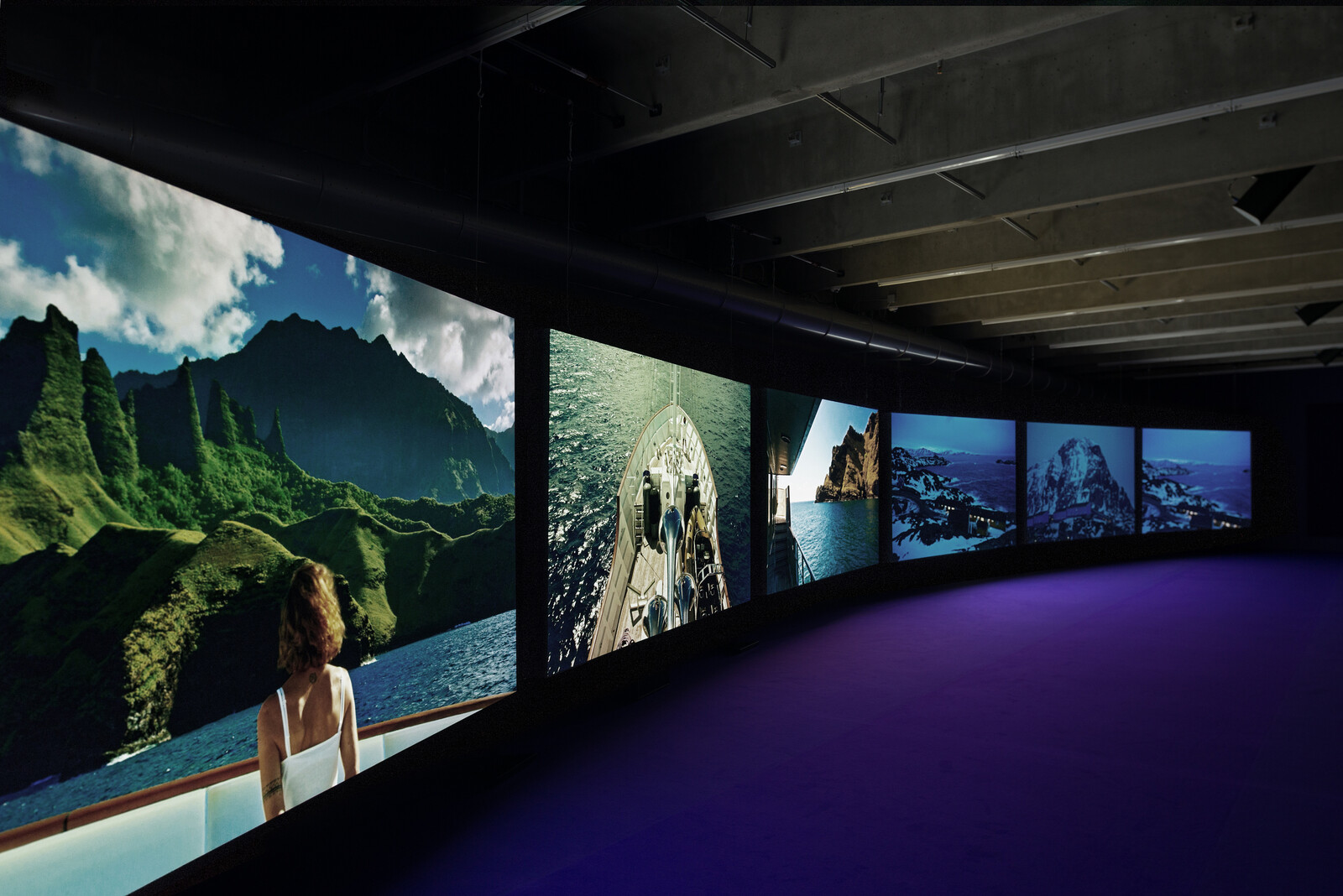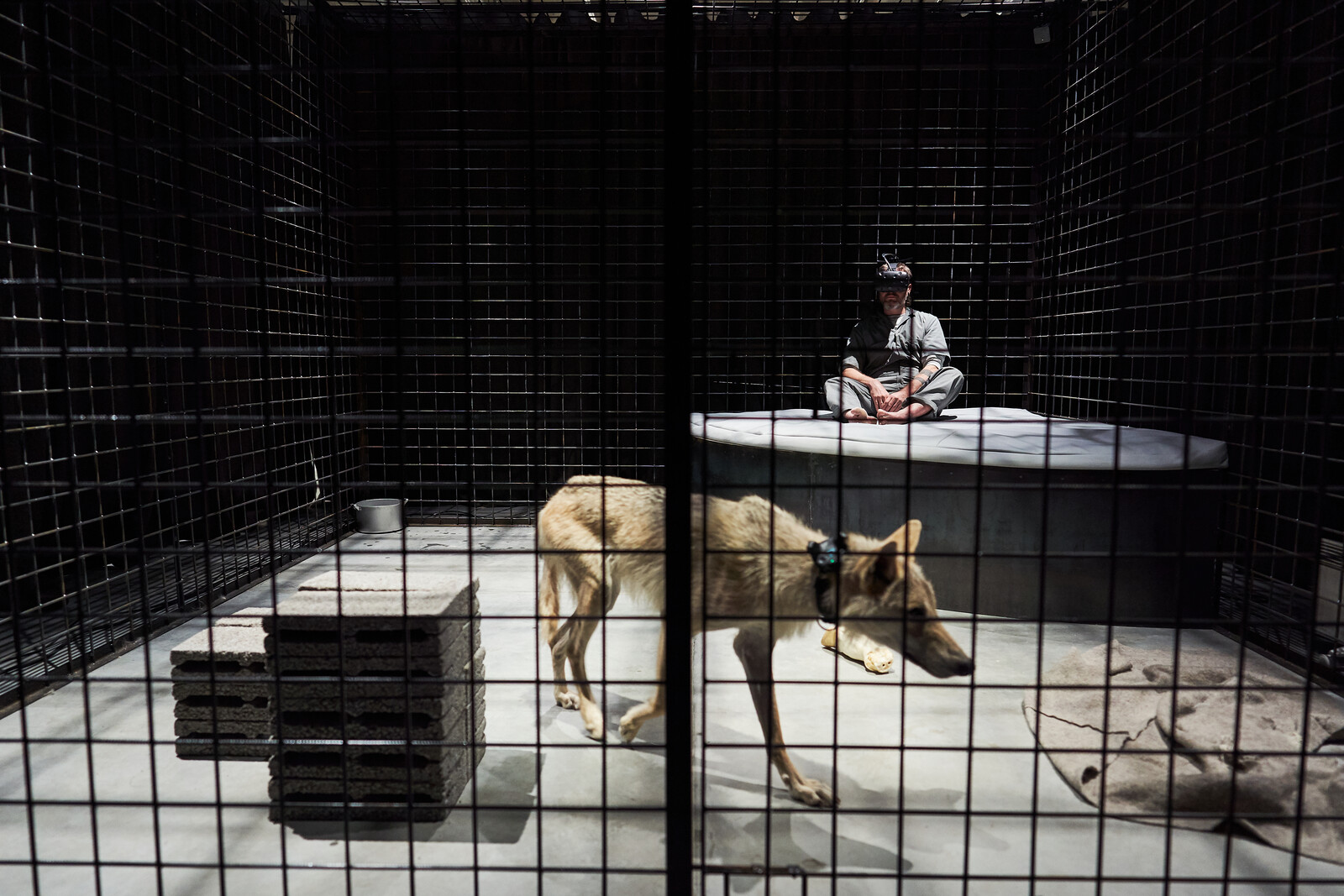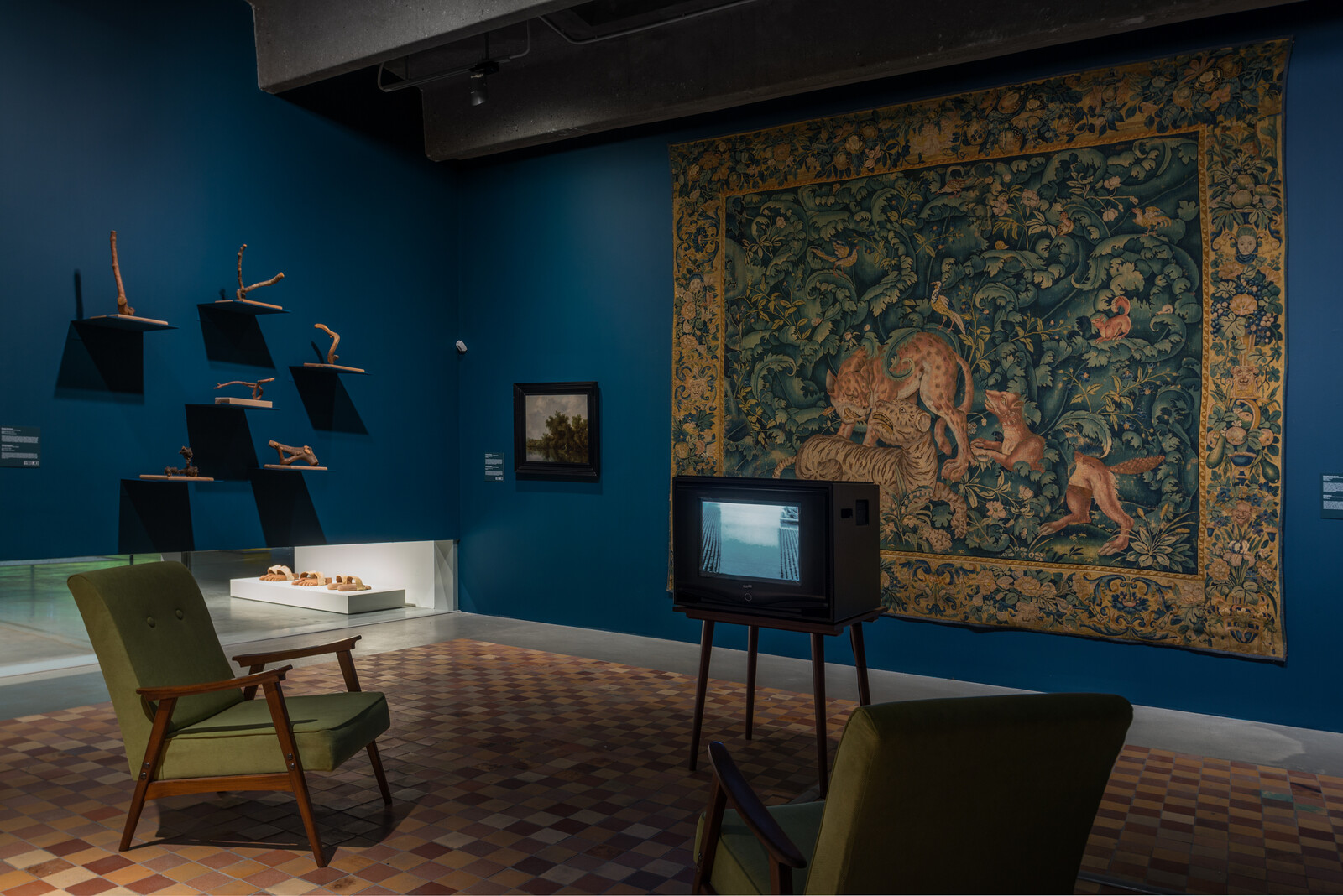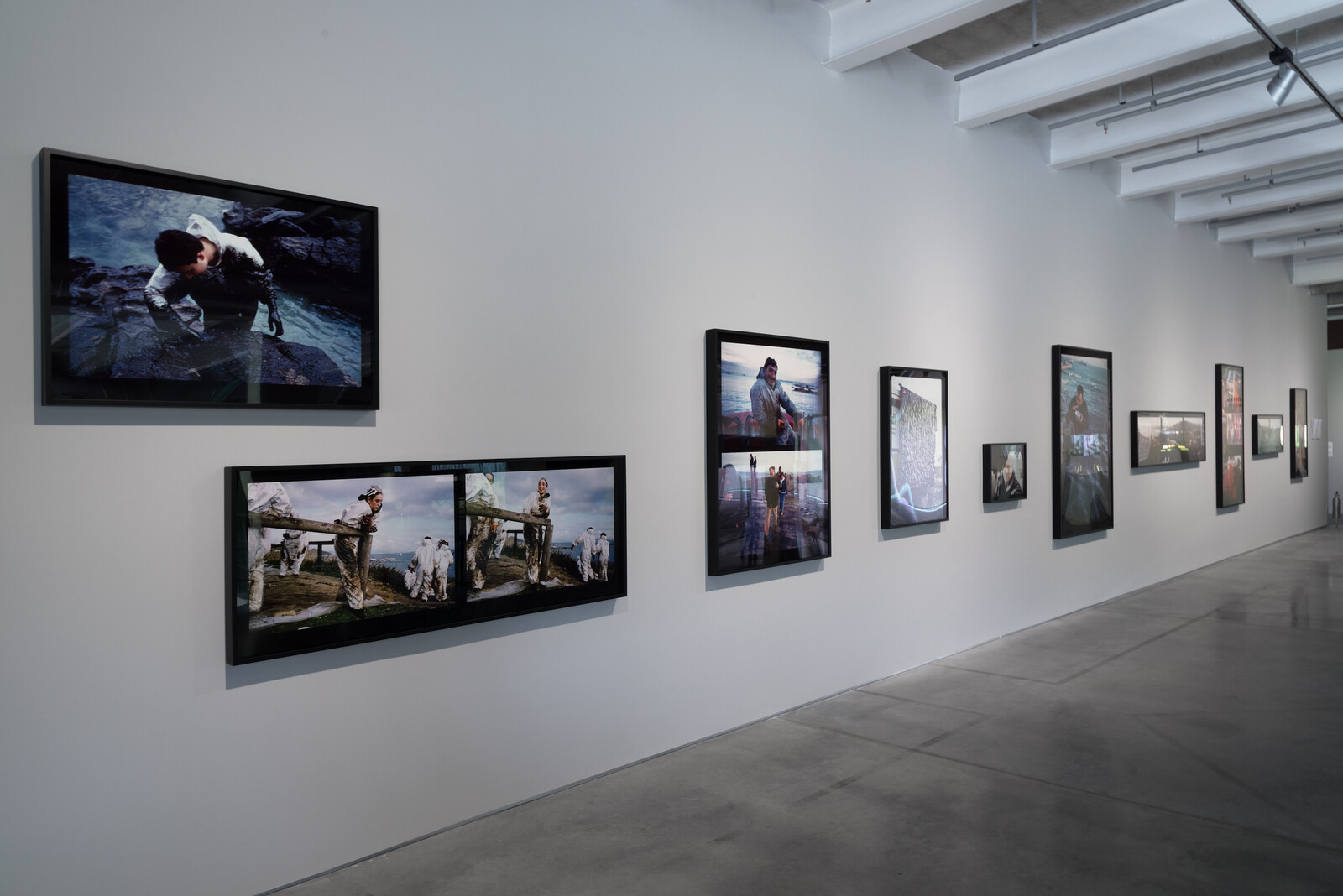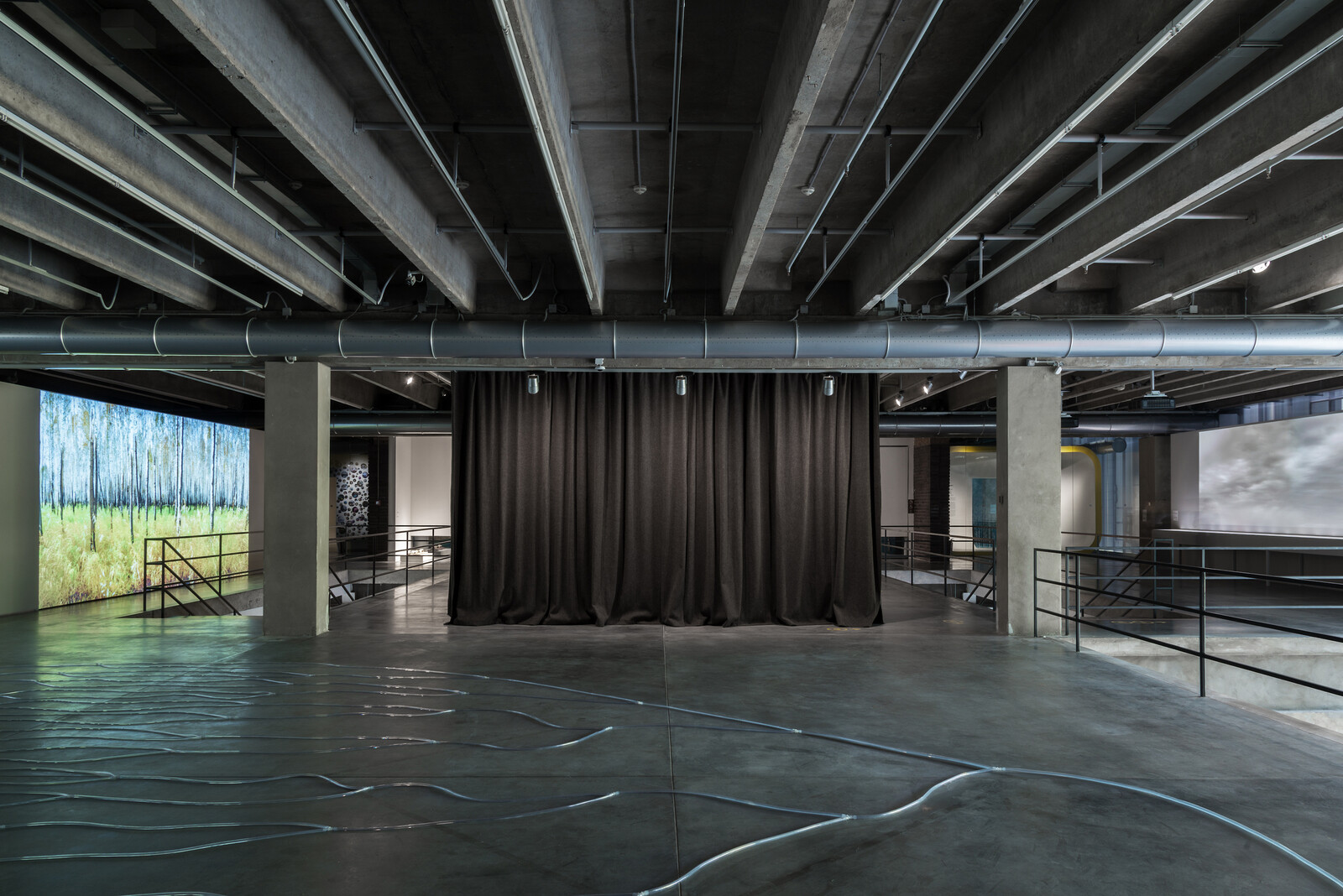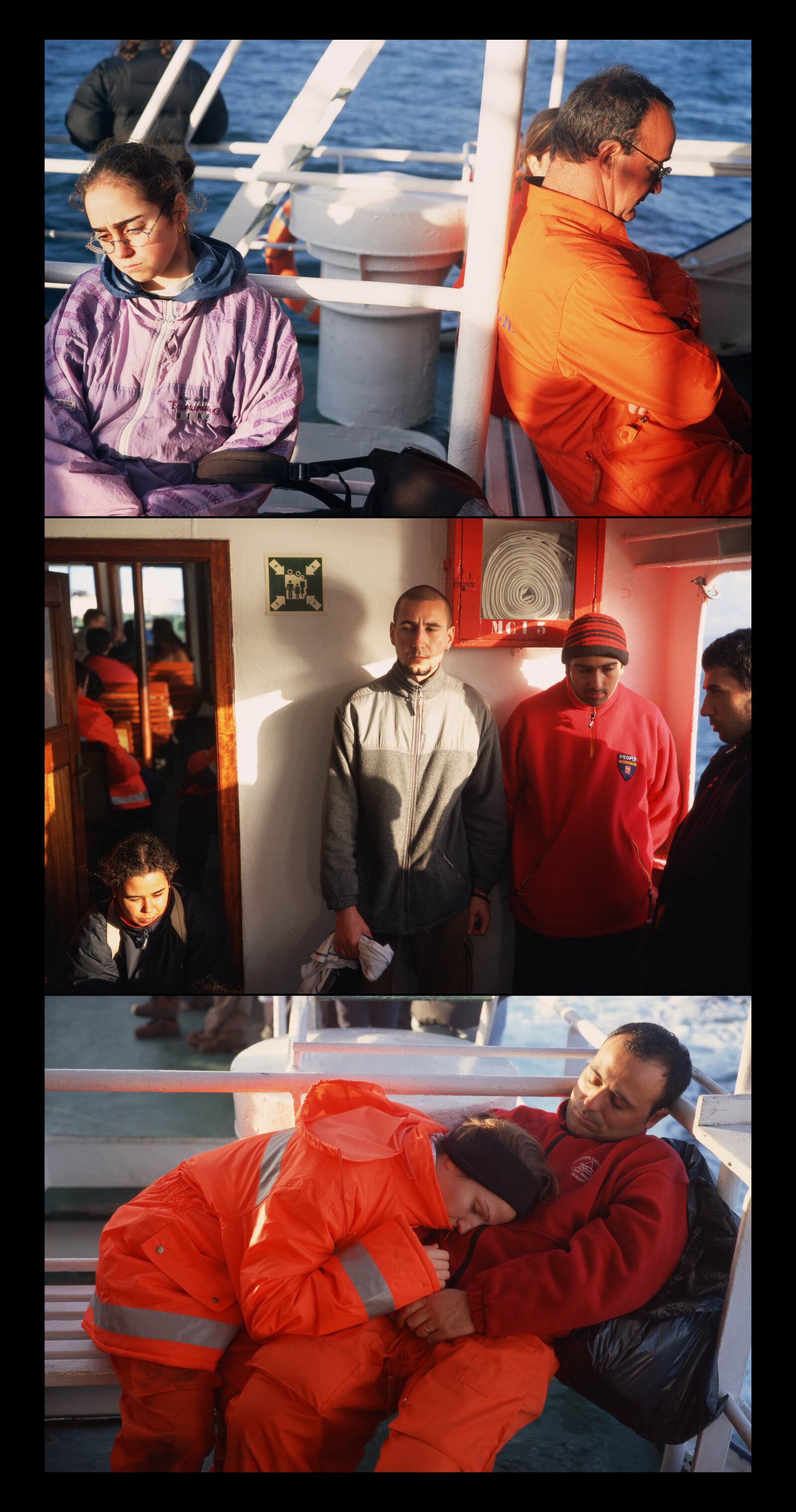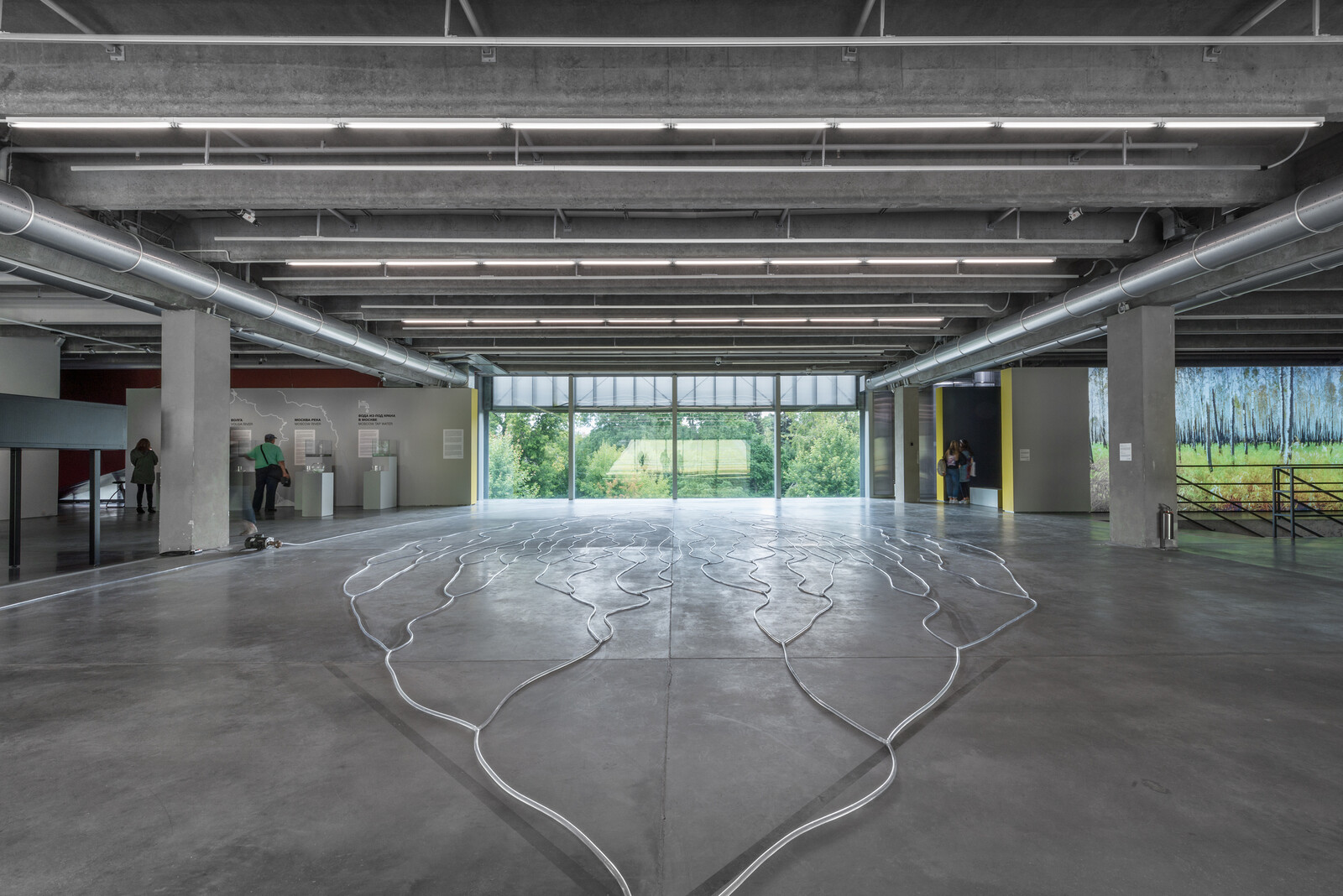According to the data provided by an online carbon footprint calculator, by taking a return flight from London to Moscow, I was responsible for the emission of 0.43 tons of CO2e, or carbon dioxide equivalent. I was flying to attend the opening of “The Coming World: Ecology as the New Politics 2030–2100” at Garage Museum of Contemporary Art in Moscow, which features artistic responses to ecology and nature. The cognitive dissonance required to excuse the substantial environmental impact of traveling more than 2,500 kilometers in order to comment on an exhibition that explores climate change is one of numerous contradictions I encountered during my visit.
This ambitious show is comparable in scale to a museum hang. There are over 50 works by Russian and international artists, including numerous large-scale installations, such as John Akomfrah’s elegiac six-channel film Purple (2017); Anastasia Potemkina’s luminous, site-specific halotherapy environment Pass Me The Salt, Please (2019); and Doug Aitken’s vast The Garden (2017–19), in which viewers are able to enter a glass room enclosed within a verdant greenhouse structure, and, if they wish, to smash up its contents with a baton. Any humor to be found in the cartoonishly violent catharsis of Aitken’s hot-headed hothouse quickly dissipates in the uncomfortable viewing of Hayden Fowler’s performance installation Together Again (2017–19), a Joseph Beuys reboot in which the artist shares a cage with a captive-bred wolf, tracking the animal’s movements through a VR headset. In response to the wall label that suggests Fowler promotes “equality between humans and animals” and that the wolf “consents” to being part of the performance, I defer to Victoria Dailey’s argument that “presenting live animals as art demolishes the meaning of art, while consigning living creatures to the impermissible category of object.”1 The ethical implications of using a living being as metaphorical prop felt vulgar and especially misguided within this “ecological” context.
The exhibition guide explains the show’s obscure title: “2030 is suggested [by biologist Paul R. Ehrlich] as the year when existing resources of oil will be exhausted,” while “2100 denotes the year that, according predictions made by Arthur C. Clarke in the 1960s, human life will be able expand to other star systems.” Despite the futuristic timeline, the show opens with a display that mixes historical objects and contemporary artworks in an attempt to explicate a history of “our shifting relationship to the natural and urban world.” This initial presentation encapsulates the generalized, and occasionally overwhelming, curatorial approach to come, in which thematic connections feel vague or assumed: an anonymous Flemish tapestry dating from the mid-sixteenth century is displayed alongside Eadweard Muybridge’s photographic study Elephant Walking (1887), Mikhail Matyushin’s tree-root “Root sculptures” (1920s), Le Corbusier’s city plans for Algiers from the 1930s, sculptures by Laure Prouvost and Martha Rosler, and more besides.
The second section, which includes works by Allan Sekula, Susan Schuppli, Critical Art Ensemble, and Tita Salina, is comparatively cohesive. The focus on tangible, challenging world events—oil spills, floods, water pollution, nuclear disasters—provides a sense of contemporary urgency in an exhibition that privileges the speculative and conceptual. In the penultimate galleries, which are divided into a warren of small “pods” apparently designed to look like spaceships, the exhaustive quantity of work on display can seem self-aggrandizing rather than sensitively selected. Here, the disparate and wide-ranging ideas of genetic engineering, synthetic biology, artificial intelligence, and interspecies breeding are thrown together in videos, sculptures, and room-sized installations by Lawrence Lek, Patricia Piccinini, Jon Rafman, Pamela Rosenkranz, Tomás Saraceno, and Studio Drift, among others.
The overblown broad strokes neutralize the nuance of the individual works. Take Hans Haacke’s Circulation (1969), a minimalist floor piece made from a circulating pneumatic pump, plastic tubing, and connectors arranged like a vascular system, that shoots water and air bubbles around a continuous circuit that snakes across the gallery floor. Whether intended by the curators or not, the sculpture’s latent institutional critique—physical circulation as a metaphor for economic flow—offers an appropriate evaluation on where this exhibition falls short. As the wall label accompanying Circulation puts succinctly: art is a “social system that cannot exist behind museum walls autonomously from life.” Well, indeed. One salient point that was resoundingly absent from the press fanfare regarding the exhibition’s “low carbon footprint” and “responsible consumption”—such as the lack of a paper catalogue and the use of recycled materials—is that the wealth of Garage’s founders is largely derived from the extraction of fossil fuels.2 Against the backdrop of a global climate emergency, it is inadequate that any carbon offsetting prompted by the show will be limited to its six-month run. With “The Coming World,” the museum has wasted an opportunity, however complex, for institutional self-reflection or long-lasting change.
Victoria Daley, “Should museums display artworks that feature live animals?,” Apollo (June 2018), https://www.apollo-magazine.com/should-museums-display-artworks-live-animals/.
Garage Museum of Contemporary Art is a private gallery founded in 2008 by Darya “Dasha” Zhukova and her then-husband Roman Abramovich. Zhukova is the daughter of the oligarch and oil trader Alexander Zhukov. In 2015, the Guardian named Abramovich as one the “a super-rich list of 12 investors whose combined coal holdings are equivalent to the entire annual emissions of China, the world’s biggest polluter” due to his stake in the steel and coal-mining company Evraz. Damian Carrington and Caelainn Barr, “Roman Abramovich among ‘dirty dozen’ people with biggest stakes in coal,” the Guardian (June 15, 2015), https://www.theguardian.com/environment/2015/jun/15/roman-abramovich-among-dirty-dozen-people-with-biggest-stakes-in-coal.

